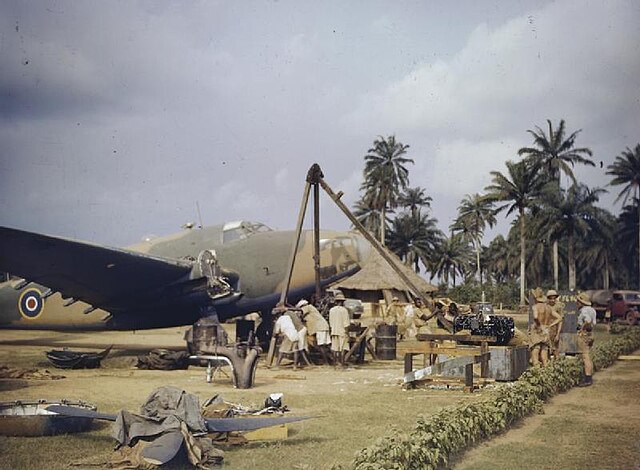The first written records of the region come from Arab traders in the 9th and 10th centuries. In medieval times, the region was dominated by the Trans-Saharan trade and was ruled by the Mali Empire. In the 16th century, the region came to be ruled by the Songhai Empire. The first Europeans to visit the Gambia River were the Portuguese in the 15th century, in 1447, who attempted to settle on the river banks, but no settlement of significant size was established. Descendants of the Portuguese settlers remained until the 18th century. In the late 16th century, English merchants attempted to begin a trade with the Gambia, reporting that it was "a river of secret trade and riches concealed by the Portuguese."
Senegambian stone circles at Wassu; burials nearby date to c. AD 927–1305 but the age of the stone circles is unknown.
Illustration of Richard Jobson in the Gambia in 1620–21.
An 1880 stamp from Gambia
Royal Air Force fitters assisted by native helpers change the engine of a Lockheed Hudson aircraft at a West African base (probably Yundum) using an improvised hoist (1943)
The Gambia River is a major river in West Africa, running 1,120 kilometres (700 mi) from the Fouta Djallon plateau in north Guinea westward through Senegal and The Gambia to the Atlantic Ocean at the city of Banjul. It is navigable for about half that length.
The western portion of the Gambia River, seen from space. The line shows the border of The Gambia.
Upstream view of the river, near Janjanbureh Island
Bank of the river, near Janjanbureh
Ferry crossing of the river, at Janjanbureh








